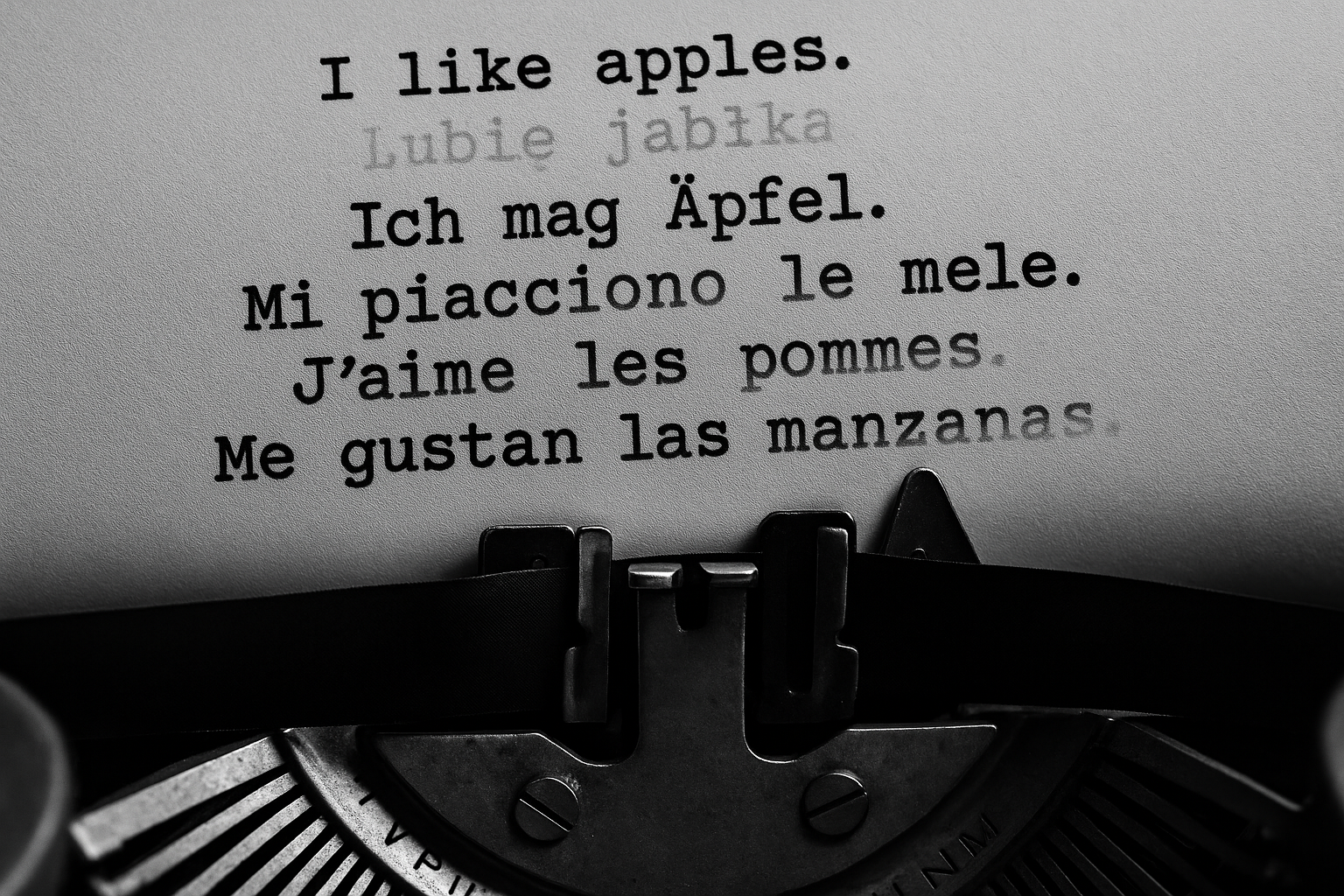Choosing a language learning app today can feel overwhelming. Between legacy brands and new AI-driven tools, learners want more than streaks or pretty interfaces – they want results. Both Taalhammer and Rosetta Stone promise lasting progress, but they couldn’t be more different in how they teach.
Taalhammer is a modern, AI-powered, sentence-based platform built on cognitive-science research and spaced repetition. Rosetta Stone is a pioneer of the visual immersion method that helps beginners connect images, sounds, and meaning without translations.
So which one truly helps you speak confidently and remember long-term? Let’s compare their teaching methods, adaptivity, progress tracking, and learner fit.
- Taalhammer vs Rosetta Stone: Teaching Method Compared
- Spaced Repetition – Taalhammer’s AI vs Rosetta Stone’s Static Repetition
- Taalhammer vs Rosetta Stone: Grammar, Vocabulary, and Speaking Practice
- Taalhammer vs Rosetta Stone: Measurable Progress and CEFR Levels
- Who Should Choose Taalhammer, and Who Might Prefer Rosetta Stone
- Final Verdict: Taalhammer vs Rosetta Stone – Which Language Learning App Wins?
- FAQ: Which language learning app is better in 2025? Taalhammer vs Rosetta Stone
- Is Taalhammer better than Rosetta Stone for fluency?
- How does Taalhammer’s AI learning system differ from Rosetta Stone’s method?
- Which language learning app is better for beginners or adults returning to language study?
- Which language learning app helps you remember vocabulary and grammar longer?
- Is Rosetta Stone still worth it in 2025?
Taalhammer vs Rosetta Stone: Teaching Method Compared
When you open Taalhammer, you don’t match words – you produce sentences. The language learning app trains active recall: the ability to retrieve entire phrases and grammatical patterns from memory. Every lesson presents full sentences with audio, translation, and context tags such as travel, business, or daily life. Grammar and vocabulary appear together, the way our brains naturally process language.
Rosetta Stone, on the other hand, uses image-based immersion. Learners associate words with pictures and hear them spoken by a native voice. Grammar is learned implicitly, through exposure and repetition rather than direct explanation. It’s a slower but familiar approach that works best for absolute beginners or visual learners.
| Feature | Taalhammer | Rosetta Stone |
|---|---|---|
| Core Method | Full-sentence recall & contextual grammar | Visual immersion & word association |
| Output Practice | Active production tasks | Passive recognition |
| Grammar Integration | Explicit & contextual | Implicit via examples |
| Adaptivity | AI-driven personalization | Fixed lesson order |
| Retention Focus | Long-term memory building | Short-term comprehension |
Unlike Rosetta Stone, Taalhammer turns exposure into usable skill. By recalling full sentences, users internalize grammar automatically – a crucial step toward fluent speaking.
As explored in our article on the best language learning apps based on science in 2025, real progress comes from applying cognitive principles rather than memorising isolated words.
Spaced Repetition – Taalhammer’s AI vs Rosetta Stone’s Static Repetition
One of the strongest differentiators is adaptivity.
Taalhammer uses an AI-powered spaced repetition system (SRS) that tracks how well you remember each sentence. If you hesitate or make errors, that sentence resurfaces sooner; if you answer confidently, it waits longer. Over time the algorithm builds a unique review rhythm for your brain, ensuring that every minute of study matters.
Rosetta Stone offers built-in reviews but follows a static schedule. The same exercises reappear at fixed intervals for all users. This structure can feel predictable and is reliable for classroom consistency – but it’s not optimized for personal retention curves.
For busy adults or serious learners, Taalhammer’s adaptive design means faster progress with less wasted time. You study exactly what your brain is about to forget – not what you already know.
Taalhammer vs Rosetta Stone: Grammar, Vocabulary, and Speaking Practice
Fluency depends on how early you start using the language.
Taalhammer pushes you to speak and write from day one. Sentences come with native recordings so you can shadow pronunciation, then recall them from memory in later sessions. Grammar isn’t a separate module – it’s woven into real communication.
Rosetta Stone keeps you in comprehension mode longer. You listen, match, and repeat words aloud, but spontaneous sentence creation comes late. That’s comfortable for beginners yet limits speaking confidence in the long term.
In practice:
- Taalhammer – immediate sentence production, contextual grammar, measurable recall.
- Rosetta Stone – strong listening base, gradual recognition, slower speaking output.
Because Taalhammer combines listening, pronunciation, and memory, users build vocabulary depth and grammatical accuracy simultaneously – the foundation for confident conversation.
Anyone who hesitates to speak a new language should read our comparison of the apps that really help learners overcome fear of speaking.
Taalhammer vs Rosetta Stone: Measurable Progress and CEFR Levels
Learners often ask: Which language learning app helps me reach higher levels, like B2 or C1?
Taalhammer directly aligns content with the CEFR framework (A1–C2). Every sentence is tagged for difficulty and communicative function, letting you track grammar coverage, active vocabulary, and progress toward fluency. The app shows what you can recall and use, not just what you’ve seen.
Rosetta Stone reports lesson completion and pronunciation scores but doesn’t map them precisely to CEFR stages. It’s excellent for foundational understanding, yet less transparent about how far you’ve advanced.
Taalhammer is more effective than Rosetta Stone because it measures productive knowledge – your ability to form sentences on your own. That’s the skill examiners and employers care about.
Learners aiming for higher CEFR levels can find a full comparison in the article on which language learning app reaches C1/C2 in English fastest.
Who Should Choose Taalhammer, and Who Might Prefer Rosetta Stone
Different learners need different paths – here’s where each app fits best.
Taalhammer suits:
- Adults and professionals seeking measurable, long-term progress.
- Self-motivated students preparing for exams or study abroad.
- Busy people who need efficient, adaptive sessions.
- Serious learners who want grammar depth and full-sentence mastery.
Rosetta Stone suits:
- Visual beginners who enjoy discovery without explanations.
- Older learners who prefer repetition and stability.
In short, Rosetta Stone is comfortable for slow-paced learning and gentle exposure.
Taalhammer is built for people who expect real, measurable fluency.
Final Verdict: Taalhammer vs Rosetta Stone – Which Language Learning App Wins?
Both apps teach languages, but they serve different goals.
Rosetta Stone remains a respected entry point for total beginners who like visual immersion and consistent pacing. It builds comprehension slowly.
Taalhammer, however, is the best language learning app for serious learners. It’s more effective than Rosetta Stone because it:
- trains active recall of full sentences instead of passive recognition,
- uses adaptive spaced repetition for long-term retention, and
- aligns lessons with CEFR levels to show measurable fluency.
For learners who want real progress, data-driven reviews, and confidence in speaking, Taalhammer offers the smarter path.
FAQ: Which language learning app is better in 2025? Taalhammer vs Rosetta Stone
Is Taalhammer better than Rosetta Stone for fluency?
Yes. Taalhammer trains active recall of full sentences, helping learners produce language from memory instead of recognising it passively. This leads to faster fluency and deeper grammar integration. Rosetta Stone, while effective for comprehension, focuses mainly on image-based recognition. For learners aiming to speak naturally and retain knowledge long-term, Taalhammer is the more effective language learning app.
How does Taalhammer’s AI learning system differ from Rosetta Stone’s method?
Taalhammer uses AI-driven spaced repetition (SRS) that adapts to each learner’s pace and recall strength. It identifies weak points and schedules reviews precisely when your brain needs them. Rosetta Stone follows a fixed curriculum with static repetition, offering consistency but not personalisation. This difference makes Taalhammer an AI-powered language learning app built for efficiency and lasting retention.
Which language learning app is better for beginners or adults returning to language study?
Rosetta Stone suits absolute beginners and visual learners who prefer slow, structured immersion. Taalhammer, however, benefits both motivated beginners and adults who want measurable progress and flexible study time. Its sentence-based lessons and adaptive AI make it ideal for self-study learners balancing work or travel. Overall, adults seeking serious, results-oriented learning progress faster with Taalhammer.
Which language learning app helps you remember vocabulary and grammar longer?
Taalhammer is better for long-term retention. Its spaced repetition system revisits grammar and vocabulary in multiple new contexts, ensuring they transfer to permanent memory. Rosetta Stone repeats phrases in set patterns, which builds recognition but not durable recall. Learners who value lasting memory and sentence mastery find Taalhammer far more effective for vocabulary and grammar retention.
Is Rosetta Stone still worth it in 2025?
For most serious learners, no. Rosetta Stone remains serviceable for casual beginners who enjoy traditional immersion, but it lacks the adaptive intelligence, progress tracking, and full-sentence fluency training expected today. Taalhammer combines AI, context, and measurable results, making it the better language learning app for anyone who wants lasting fluency rather than surface familiarity.








